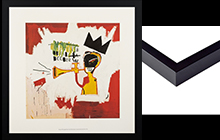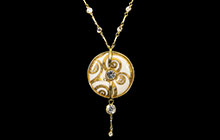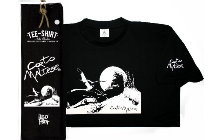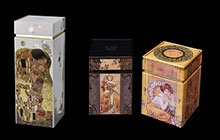Delivery with DHL Express(1 to 5 Days)
All our products are IN stock - IMMEDIATE Shipping
- Passion Estampes Browsing
- Home
- Novelties
- Artists
- Wall decoration
- Products & Gift ideas
- Art Prints
- Lithographs
- Jewels
- Scarves
- Ties
- Tableware
- Puzzles
- Comics world
Novelties
Artists
Art Prints - Posters
Wall decoration
Lithographs
Scarves
Ties
Jewels
Tableware
Puzzles
Products & Gift ideas
Comics world
Contact us
Paul KLEE Coffee Set : "café gourmand"
"Senecio"
Coffee Set, porcelain
Limited edition : 5000 pieces
Certificate and cups individually numbered
Genuine 22-carat gold decoration
L : 20 cm
l : 10 cm
H : 7.5 cm
Dishwasher safe but recommended to wash by hand with a mild cleanser
to preserve the brilliant colours and gold decor
We are experienced in shipping fragile items worldwide
Our shipping charges include insurance
We guarantee delivery in good condition
Availability :
in stock
in stock
45.00 €
Paul Klee (1879-1940 Germany)
* * *
Main works :
Senecio, Deux dromadaires et un âne, Parc près de Lu, Nuit bleue, Der Niesen, Petit cadre de pinArtistic movements :
At first constructivist, he goes slowly to a soft abstraction where the landscapes express themselves in harmonious geometrical forms.Inspiration, influence :
His(Her,Its) inspirations are numerous. Fascinated by drawing from an early age, he(it) is marked as well by the artists of the Italian Renaissance as by the Impressionists he( meets in Paris in 1905... But also by the works of Corot, Ensor or still Goya or Velasquez. The synthesis that he will make it in his painting is multiple too !His contemporaries :
When Gropius calls him in Weimar so that he teaches, this is a whole generation of abstract painters and theorists that he finds in the Bauhaus.To keep in mind :
Beyond the forms and the colors, the Paul Klee's work is full of humanity and spirituality which makes him unique, as well in his period as in Occident.To go further :
Paul Klee, sometimes considered as the first one of the surrealists, more by its approach than by his painting, opened the way of the following generation. Delaunay pursued the researches of the German painter.Our website uses session cookies
Our website uses session cookies to improve site navigation and to enhance your online experience by maintaining information from page to page within these applications. Cookies allow us to personalize the content and facilitate your access to the shopping cart, offer social media features and analyze our traffic.
International shipping every day from monday to friday












































